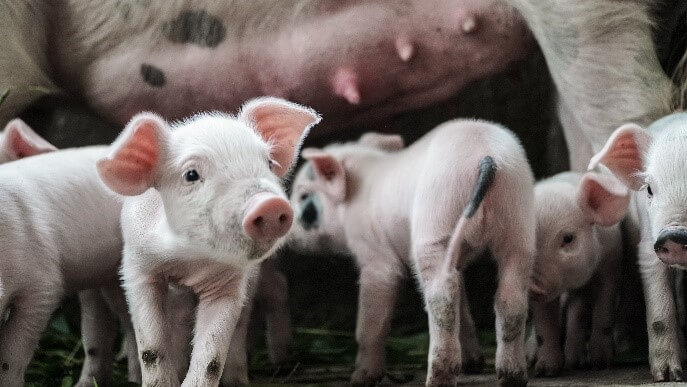AFRICAN SWINE FEVER: STERILIZATION OF CONTAMINATED FEED THROUGH HIGH-SHEAR DRY EXTRUSION

In the last five years, two endemic viruses – Highly Pathogenic Avian Influenza and Porcine Epidemic Diarrhea Virus – were introduced to North America and resulted in a significant economic impact exceeding millions of U.S. dollars. Most recently, African Swine Fever (ASF) – a foreign animal pathogen – has been wreaking havoc across Europe and Asia. Several articles highlighting potential hazards of transmission of ASF have recently been published here and here.
ASF – to which there is no effective vaccine or treatment – causes a highly contagious and deadly disease for pigs, although it does not pose a threat to human health. Since early last year, ASF has spread throughout pig farms in China and parts of Europe, with the most recent emergence in Vietnam. ASF can also infect wild boars, although the infection is relatively mild, infected boars pose a risk to spread the virus to conventionally raised pigs.
Currently, ASF has remained outside North and South America, despite ongoing concerns of the virus spreading. Importing of ASF-contaminated products, including contaminated pork products and feed ingredients derived from ASF-infected pigs remains the biggest threat of introduction for ASF-free countries. Most recently, a study from Kansas State University’s Dr. Niederwerder demonstrated even at minimal infectious doses, ASF-contaminated feed and water can cause disease in pigs. While the origin point of introduction remains unknown, the vast and rapid spread of ASF across both Europe and Asia could in part be attributed to transmission from ASF-contaminated products – including contaminated pork and animal-derived feed ingredients. For this reason, enhanced biosecurity should be expanded to include feeding programs and feed ingredients imported from ASF-affected countries.
A research trial conducted by Dr. Don Reynold’s Lab at Iowa State University and presented by Dr. Nabil Said showed high-shear dry extrusion as effective means of sterilization or a “kill-step” for animal waste by-products and carcasses. As a result, the FDA Center for Veterinary Medicine issued no objection letters for Insta-Pro’s high-shear dry extrusion process as a method to properly sterilize and process swine and poultry carcasses into reusable feed ingredients. As a biosecurity measure at the feed mill, the use of high-shear dry extruded feed ingredients could reduce the risk of ASF transmission through infected feed due to its sterilization properties.
If the U.S. becomes infected with ASF, proper disposal of expired infectious animals is required to reduce the risk of spreading the virus to healthy herds. Additionally, properly sterilized animal by-products and carcasses can become a value-added feed ingredient for other industries, such as pet food. In conclusion, high-shear dry extrusion can be used to sterilize feed ingredients to prevent the spread of ASF and other foreign animal diseases.



